Death is everywhere at the Getty Villa. Every artist represented in this museum of ancient Greek, Roman, and Etruscan art is centuries gone. Every portrait bust, coin, and painting represents the long-deceased. Many of the objects once ornamented a tomb, or survived because they were interred in one. Several are themselves tombs.
 In honor of Death Salon Getty Villa, here’s a lively roundup of 15 of the deathiest objects of all, as chosen by Villa curators and educators. Objects are arranged by gallery, so you can begin at ground level and move heavenwards.
In honor of Death Salon Getty Villa, here’s a lively roundup of 15 of the deathiest objects of all, as chosen by Villa curators and educators. Objects are arranged by gallery, so you can begin at ground level and move heavenwards.
 1. Greek Krater with Adonis, Aphrodite, and Persephone
1. Greek Krater with Adonis, Aphrodite, and Persephone
Made immortal by the gods, gorgeous Adonis spent half the year with Aphrodite on earth, the other half with Persephone in the afterworld.
That’s interesting: Because Adonis crossed between the worlds of death and life, this myth explained the seasons.
Find it: Gallery 104 (downstairs)
 2. Statues of Two Sirens
2. Statues of Two Sirens
The song of the Sirens lured sailors in Homer’s Odyssey to crash and die on hidden rocks. These alluring sirens, paired in a sculpture group with a poet, probably once guarded a tomb.
That’s interesting: Sirens are usually depicted as part woman, part bird.
Find it: Gallery 109 (downstairs)
Hear it: Audio on SoundCloud
 3. Kylix with the Suicide of Ajax
3. Kylix with the Suicide of Ajax
On this wine-drinking cup, Greek warrior Ajax has fallen on his own sword after losing out on a prize he deserved.
That’s interesting: For the ancient Greek hero, suicide was an acceptable response to dishonor.
Find it: Gallery 110 (downstairs)
Hear it: Audio on SoundCloud
 4. Gravestone of Sime
4. Gravestone of Sime
This memorial for an ancient Greek mother shows her surrounded by her husband and adult children.
That’s interesting: The handshake is thought to represent family unity after death.
Find it: Gallery 201B (upstairs corridor)
 5. Sarcophagus with the Moon Coming to Her Lover
5. Sarcophagus with the Moon Coming to Her Lover
The moon goddess, Selene, keeps her youthful lover Endymion asleep forever so he won’t age and die. His peaceful sleep is like the eternal slumber of death, only sexier.
That’s interesting: To ensure Endymion does not wake, the god of sleep pours poppy juice on him.
Find it: Gallery 201B (upstairs corridor)
Hear it: Audio on SoundCloud
Watch it: Video narrated by Eric Bruehl
 6. Funerary Lion
6. Funerary Lion
This crouching lion once presided over a family burial plot near Athens, doubling as a status symbol. The animal’s strength and ferocity made it an excellent symbolic guardian.
That’s interesting: Ancient Athenian grave monuments got so over the top that they were strictly regulated in 317 B.C.
Find it: 201B (upstairs corridor)
Hear it: Audio on SoundCloud
 7. Gravestone of Helena
7. Gravestone of Helena
Is this a girl’s headstone or a dog’s? Art historians debate.
That’s interesting: Like us, the Romans owned and pampered lapdogs, and sometimes included them in funerary art.
Find it: Gallery 201B (upstairs corridor)
Hear it: Audio on SoundCloud
 8. Mummy of Herakleides
8. Mummy of Herakleides
This young Roman Egyptian, Herakleides, shares his wrapper with another, smaller mummy.
That’s interesting: Herakleides received a CT scan at UCLA in 2005.
Find it: Gallery 206 (upstairs)
Watch it: Video of the mummification process »
Hear it: Audio on SoundCloud
 9. Mummy Portrait of Isidora
9. Mummy Portrait of Isidora
Romano-Egyptian mummy portraits like this one were inscribed with the names of the deceased to help the spirit reunite with the body.
That’s interesting: Hunting for jewelry, early treasure seekers destroyed mummies and left only the portraits behind.
Find it: Gallery 206 (upstairs)
Watch it: Video narrated by Eric Bruehl
Hear it: Audio on SoundCloud
 10. Oil Jar with Family Members Visiting a Grave
10. Oil Jar with Family Members Visiting a Grave
A lekythos is a small oil container used in funerary rituals. On the vase, a young man and woman decorate a gravestone with ribbons, oil, and a flower.
That’s interesting: This woman’s short hair could be a mourning gesture—or signify her status as a slave.
Find it: Gallery 207 (upstairs)
Hear it: Audio on SoundCloud
 11. Statuette of a Dead Youth
11. Statuette of a Dead Youth
This slain young man may represent one of the Niobids, children slain by the gods as punishment for their mortal mother’s boastful pride.
That’s interesting: Since ancient times, artists have found beauty in the suffering and release of death.
Find it: Gallery 209 (upstairs)
Hear it: Audio on SoundCloud
 12. Terracotta Sarcophagus
12. Terracotta Sarcophagus
Burial in fired clay coffins was popular in East Greece in the 500s B.C. At the top of this seven-foot-tall example, two soldiers fight from facing chariots.
That’s interesting: This example is rare because it preserves the body box as well as the painted frame.
Find it: Gallery 209 (upstairs)
Hear it: Audio on SoundCloud
 13. Painted Wall Panel from a Tomb
13. Painted Wall Panel from a Tomb
The Etruscans, an ancient people of central Italy, frequently decorated their tombs with wall paintings and ornaments on terracotta tiles. This one shows an ancient athlete.
That’s interesting: Etruscan funerary paintings often depict games honoring the dead.
Find it: Gallery 211 (upstairs)
Hear it: Audio on SoundCloud
 14. Miniature Skeleton
14. Miniature Skeleton
Behold the larva convivalis, a death-themed discussion starter used at Roman dinner parties.
That’s interesting: He used to be posable, and could shake and dance.
Find it: Gallery 212 (upstairs)
 15. Sarcophagus with Cupids Treading Grapes
15. Sarcophagus with Cupids Treading Grapes
Chubby, naked infants make wine on this coffin. The grapevine, reborn annually, symbolizes transcending death.
That’s interesting: The word sarcophagus comes from the ancient Greek for “flesh eater.”
Find it: Gallery 213 (upstairs)
Hear it: Audio on SoundCloud
This post accompanies #DeathMatchGV, a social media project for Death Salon Getty Villa to identify the deathiest object at the Villa. Download the Death Match handout here [PDF].

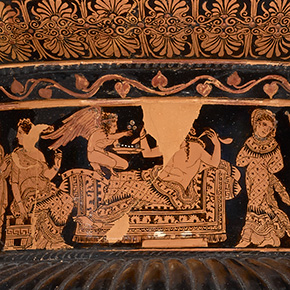 1.
1. 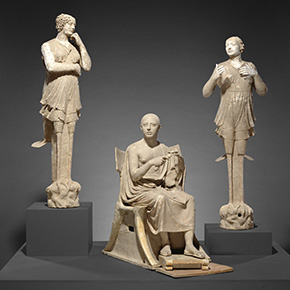 2.
2. 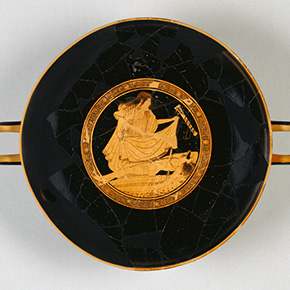 3.
3. 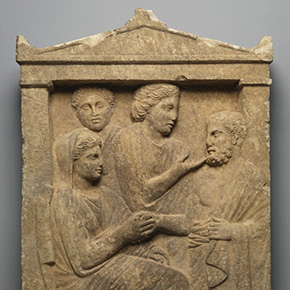 4.
4. 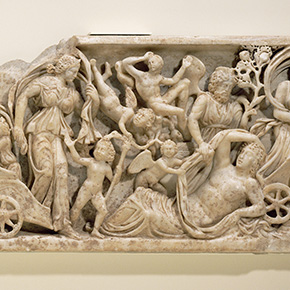 5.
5. 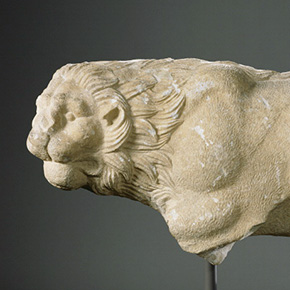 6.
6. 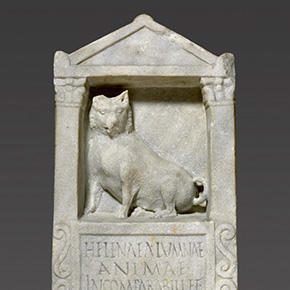 7.
7.  8.
8. 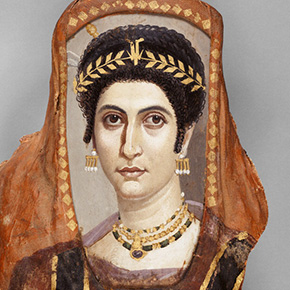 9.
9. 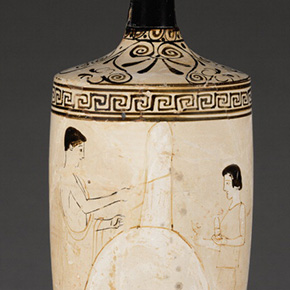 10.
10. 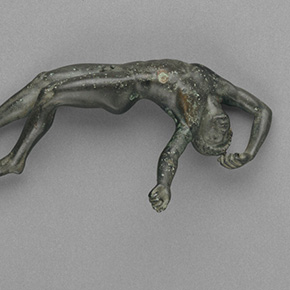 11.
11. 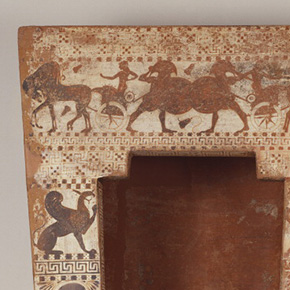 12.
12. 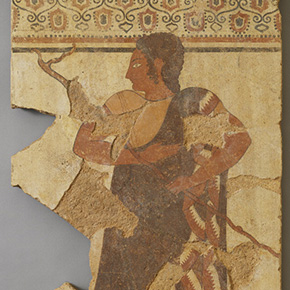 13.
13. 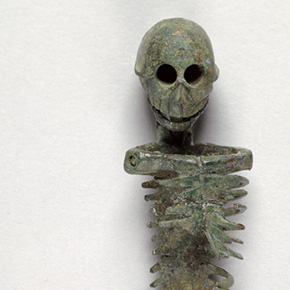 14.
14. 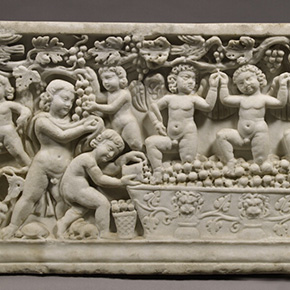 15.
15. 


Deathiest, huh?
Yeah, it’s like “deathy,” except more so.